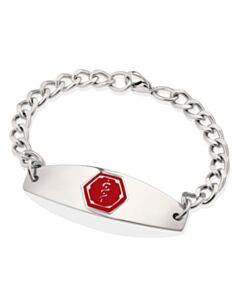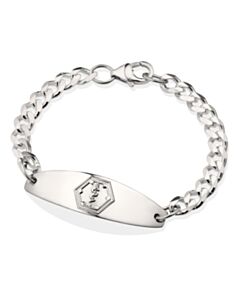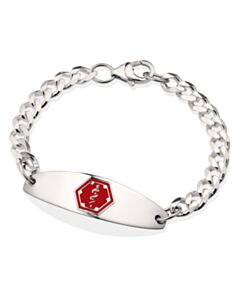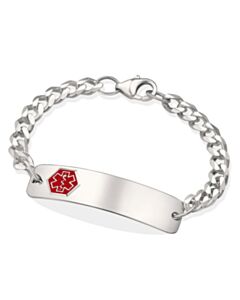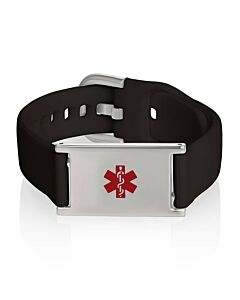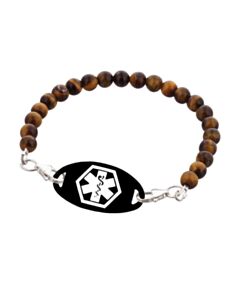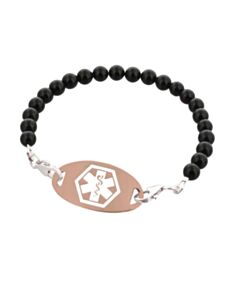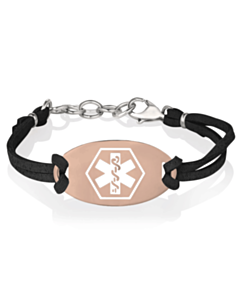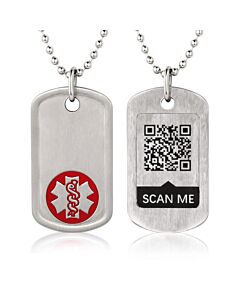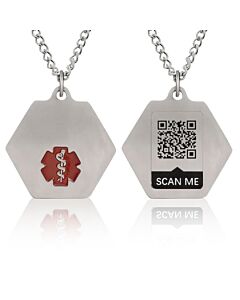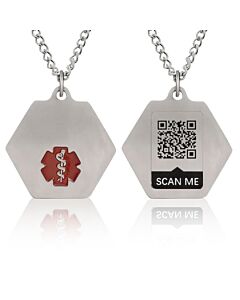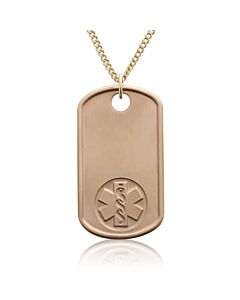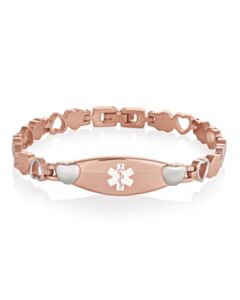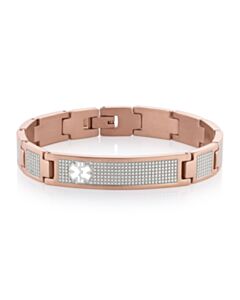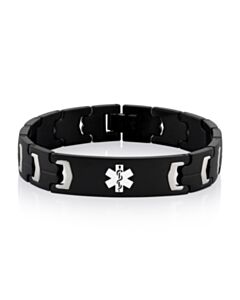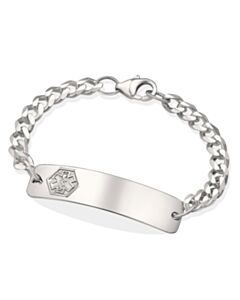

Medical IDs for Bee Sting and other Insects Allergy
An insect/bee allergy medical ID is recommended anyone who is allergic to bee stings or other stinging insects. While insect stings are a common outdoor nuisance, a person with an allergy to bee venom or insect stings may have severe allergic reactions. This includes anaphylaxis.
According to CDC, stings from bees, hornets and wasps can be deadly. Stings from this group of insects are responsible for at least 62 deaths annually. Unfortunately, most people won’t know if they are allergic to bee stings until they are stung by one.
There are no immediate or apparent signs that a person is allergic to insect stings. Unless a patient wears a bee sting medical ID bracelet or necklace, symptoms of their allergic reactions could be misdiagnosed. Anaphylactic reactions can be life threatening and require emergency treatment.
"If you are allergic to bee venom, you should always carry epinephrine with you and wear a medical I.D. bracelet. Ensure that your friends, family members, and co-workers know how to use an epinephrine autoinjector." – Healthline
Common Stinging Insects that cause Allergic Reactions
For people who are allergic to insect stings, the venoms of the following insects can cause their immune system to overreact.
- Yellow jackets
- Honeybees and bumble bees
- Paper wasps
- Hornets
- Fire ants
The American Academy of Asthma & Immunology recommends staying away from these insects as they are likely to sting if their homes are disturbed. It is equally important to know how to identify them.
Medical IDs and Bee Stings in Emergencies
It is estimated that about 2 million Americans have allergies to the venom of stinging bugs. Many of these people are at risk for life-threatening allergic reactions. The CDC states that thousands of people are stung by insects each year, and as many as 90–100 people in the United States die as a result of allergic reactions. Symptoms of allergic reactions from bee and insect stings are also at risk of being mistakenly diagnosed as heart attacks, sunstrokes, or may be attributed to other causes.
Wearing medical IDs for bee or insect sting allergy can alert others that this allergy is present and help avoid misdiagnosis. Severe allergic reactions to stinging insect venom, including anaphylaxis can be fatal, it is a life-threatening emergency that requires quick action.
"Allergic reactions to bee stings can be deadly. People with known allergies to insects stings should always carry an insect sting allergy kit and wear a medical ID bracelet or necklace stating their allergy. See a physician about getting either of these." - NASD Online
What to put on a Bee or Insect Sting Medical ID


A medical ID for bee or insect stings can alert medical professionals of everything they need to know about your allergy. Some people are prescribed to carry emergency epinephrine autoinjectors or EpiPen. If a bee or insect sting allergy is identified, responders can quickly administer the epinephrine injection or similar medication during a severe allergic reaction.
Here are some of the most important items to put on a medical ID for bee or insect venom allergy:
- Name
- Bee or Insect Allergy – you can also specify the type of insect allergy that you have (bee, wasp, etc.) that you have and other medical conditions that may or may not be related to your allergy.
- EpiPens or other rescue medications – alert others if you carry an epinephrine autoinjector and where responders can find it in your person.
- Emergency Contact
Our Adult Bee Allergy Bracelet & Wristband Options
The most common type of medical ID is a bracelet, which 95% of first responders are trained to check in an emergency situation. We offer bee allergy bracelets in many different styles and metal types to fit your lifestyle perfectly.
Bee Allergy Bracelets for Kids
Shop kids bee allergy bracelets for all ages, from toddler through young adult. Consider choosing an adjustable band to allow it to fit nicely as they grow.
Our Bee & Insect Allergy Necklace Options
When shopping for a necklace, consider your style and what metal type suits your taste. We offer bee allergy necklaces in stainless steel, sterling silver, 10kt and 14kt gold.
Best-Selling Bee Allergy Jewelry
View our most popular bee allergy jewelry options.
Frequently Asked Questions
Should I wear a medical alert bracelet for wasp/bee allergy?
Yes, wearing a medical alert bracelet is a smart decision if you are at risk for anaphylactic shock from a wasp, bee, or insect sting. Make sure to include any other relevant information, such as the location of an epipen or emergency medical treatment (inhaler, etc.).
What is the medical alert symbol for bee allergy?
While there is no “symbol” for a bee allergy, simply putting “Bee Allergy” or “ALGY: Bee” on your medical ID will signify to a medical professional of the allergy to help prevent misdiagnosis.
Should I still carry an wasp/bee/insect allergy card if I wear an alert bracelet?
Yes, you should carry an expandable wallet card with full medical details. Since an engraved medical alert bracelet will often have space limitations, you can include any lower priority, but still important, medical information. Include information such as emergency contacts (family + primary care physician), other conditions and allergies.
"If your child has had a systemic reaction to a stinging insect, he should wear a medical ID bracelet or necklace." - Nationwide Children's



 - UK
- UK  - Canada
- Canada  - Australia
- Australia 
